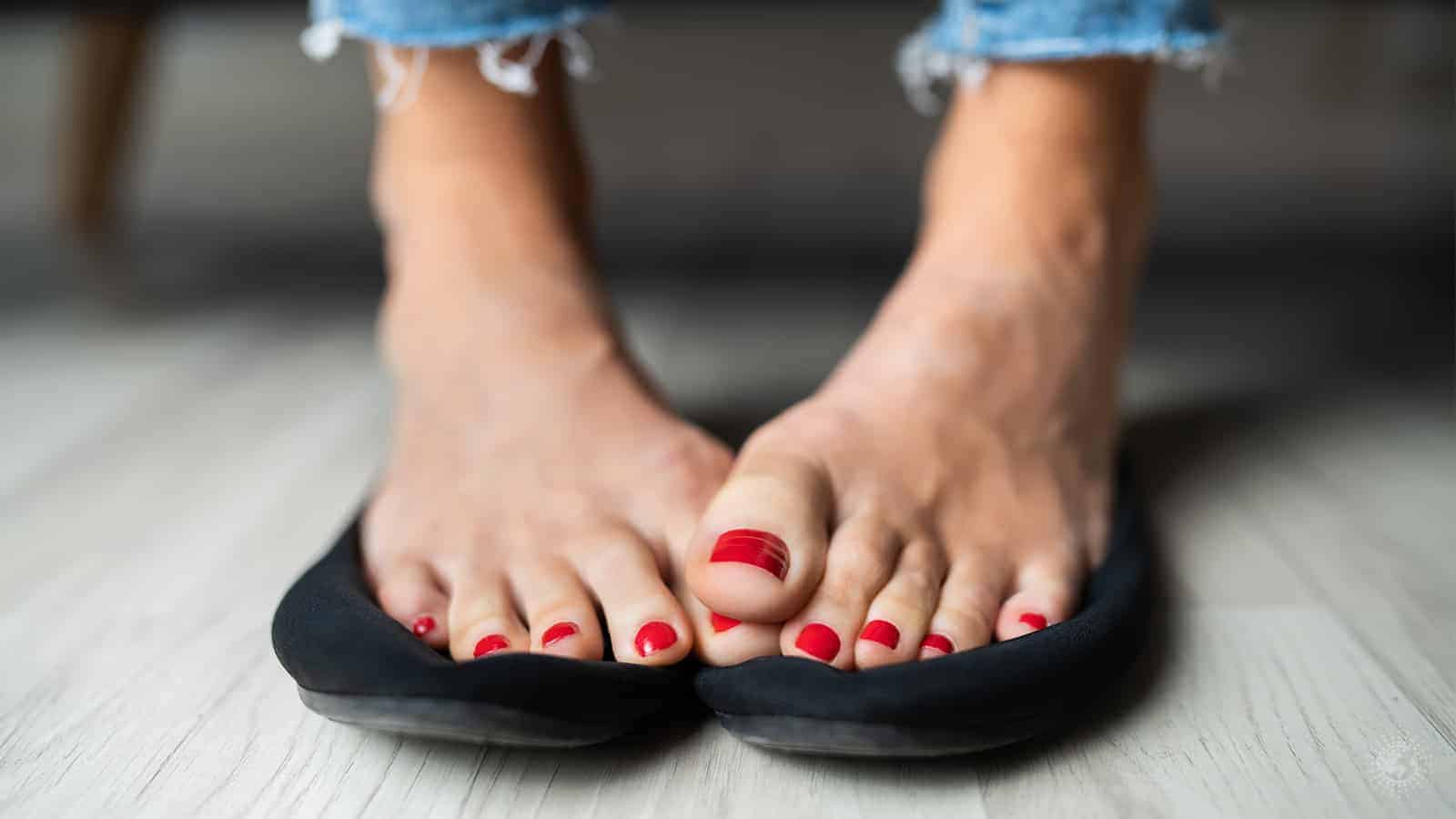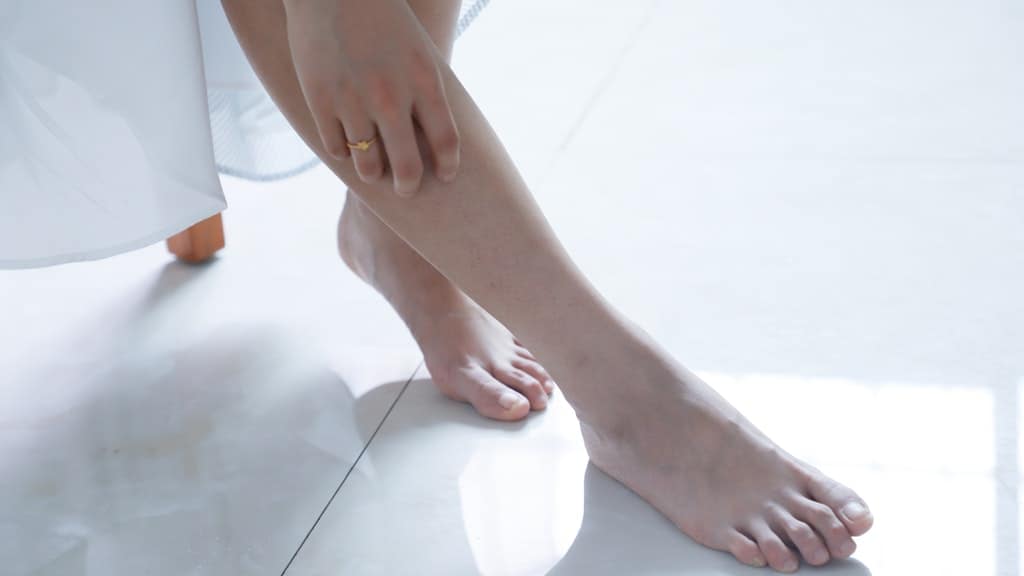Sweaty feet are uncomfortable, smelly, and often embarrassing. Many people try their best to keep the sweat at bay, but if you go about it the wrong way, you may not be able to solve the issue on your own. In fact, you might wind up making it worse!
So how, exactly, can you get rid of sweaty feet? To do so, you must first know the actual severity of your issue, and then you have to understand what is causing the sweating. Here’s how doctors recommend 5 reasons for sweaty feet, and how to stop it.
1. Bad Footwear
Bad footwear options can be a big reason for sweaty feet, and for most people, this is the most likely cause behind their sweat-related woes. Here are some ways bad footwear can affect this problem, and how each issue can be prevented:
· Too-Tight Shoes
When shoes are too tight, your toes are squashed together and there’s less room to move in, meaning there’s less room for airflow in the shoe and through the gaps in your toes. Board-certified podiatrist Danielle DesPrés, D.P.M., who works in the New York College of Podiatric Medicine’s department of medicine as an instructor, says this is what gets the temperature higher inside your shoes. As such, you should choose shoes that provide you with a little bit of wiggle room.
· Wrong Types Of Footwear
Some popular types of shoes advertised as summer footwear are actually not particularly good for hot weather. Leather sandals, plastic slip-ons, and vibrant but very closed sneakers all look nice but trap heat. Step Up Footcare founder and board-certified surgical podiatrist Neyla Lobkova, D.P.M., recommends more breathable options, such as shoes with porous jute or cork souls, sandals with little material on top, or shoes that have air mesh toppers.
· Wearing The Same Shoes Again and Again
It’s okay to have a favorite pair of footwear, but wearing only those non-stop lets fungus grow inside. This can cause itching, odor, and, of course, sweat. You’ll probably want to have an extra pair of shoes to cycle between, recommends DesPrés. This gives your favorites time to air out and not get too funky!
· Wearing The Same Socks All Day
If you tend to get sweaty feet quickly, you may want to bring an extra pair of socks or two along with you. This will allow you to swap out your current socks with ones that haven’t been collecting sweat and stench for the past few hours. In fact, Gary A. Pichney, D.P.M., who works at the Mercy Medical Center’s Institute for Foot and Ankle Reconstruction as a board-certified surgical podiatrist, recommends always bringing a back-up pair.
· Socks With Poor Material
Cotton isn’t a poor material by any means, but it’s pretty bad when it comes to wicking away moisture without collecting sweat and, eventually, working up a stink, says DesPrés. You’ll want to opt for socks that specially wick away sweat. An unlikely good material for this is wool, as wool keeps moisture away without absorbing it. Synthetic blends and specially designed socks may also have similar benefits!
2. Lack of Cleanliness
If you don’t wash your feet enough, you’ll wind up with a lot of stench and sweat, says Amesh A. Adalja, M.D., an infectious disease expert and a Johns Hopkins Center for Health Security senior scholar. Soaping feet, while you’re in a bath or shower, is an easy way to combat this.
UCLA Medical Center’s chief of podiatric foot and ankle surgery Robert K. Lee, D.P.M., adds that this is because feet are coated in bacteria and that bacteria will feed on the waste from sweat glands, creating a stench and potentially increasing sweat production.
So when your feet get sweaty, wash them, and you’ll give bacteria less to feast on and break the cycle of sweaty (and smelly) feet. On top of that, washing your feet cools them down, preventing further sweating down the line. Just don’t forget to dry off well after to prevent bacteria from settling in damp spots!
While you’re soaking or cleaning your feet, consider adding some of these steps to your routine to further combat sweating:
· Exfoliate
Exfoliating your feet helps to remove dead skin cells that bacteria like to feast on. Do this twice or thrice weekly and you’ll notice less odor and less stench.
· A Tea Soak
Add 4 or 5 tea bags of sage tea or black tea to about one quart of boiling water, allow to steep and cool, then soak your feet for between 15 and 20 minutes. This works well because these types of tea are astringent, which essentially close pores and tighten up the skin to help reduce sweat.
· Lemon Juice Application
Use cotton balls to absorb some fresh lemon juice, then dab it onto your feet’s soles right before you put footwear on. This works because lemon juice is a great deodorant and can also help to close the pores, according to the California Dermatology & Clinical Research Institute.
· An Apple Cider Vinegar Soak
Just like tea, apple cider vinegar is an astringent, and it also has antibacterial and antifungal properties that keep your feet clean. Mix a 2:2:1 ratio of water, apple cider vinegar, and baking soda respectively, and soak your feet in the mixture for between fifteen and twenty minutes. Don’t want to do a soak? You can achieve positive effects from applying apple cider vinegar with a cotton ball.
3. Lack of Hydration
It’s easy to think that water can’t help with sweat since sweat is also a liquid. But the physiology of sweat glands is such that they activate when you need to be cooled down. After all, that’s what sweat is for – to lower body temperature.
Hydrating yourself will not only have positive effects on your body overall, but it’ll also keep your temperature balanced, says Lobkova. Make sure to drink regularly at a minimum of eight glasses or 64 ounces of water per day. If you’re up and about or performing a lot of exercises, then increase your intake.
4. Hyperhidrosis
Hyperhidrosis refers to heavy and excessive sweating. If it’s not just sweaty feet you deal with, but virtually sweaty everything, then you may have hyperhidrosis.
Though it is quite an embarrassing issue to deal with, keep your positive thinking! It can be treated, according to doctors at WebMD. You should speak to a doctor about your issues if you find that you sweat in excess. Here are some possible treatments for hyperhidrosis:
· Botulinum Toxin
You likely know of this treatment as Botox, which is commonly used in aesthetic procedures to reduce wrinkles. But did you know that it’s also approved by the FDA for use in the treatment of hyperhidrosis in the underarms? Some doctors also use it for the soles of feet and for the palms of hands. How does it work? Well, Botox halts the activation of sweat glands through the use of special, safe chemicals. Usually, multiple Botox injections are needed, but positive effects can last for a year.
· Iontophoresis
This type of treatment is not very well understood, but most doctors agree that it works. It is used to treat sweaty feet and/or hands. You would place the affected parts (feet and/or hands) into a tray full of shallow water. Then, an electrical current at a very low level is coursed through the water. Most believe that this works by preventing sweat from reaching the surface of the skin. At first, multiple treatments per week are needed, but the sweating eventually slows or stops, and effects are positive.
· Anticholinergic Drugs
This option is not particularly common but is offered to those who don’t see results from Botox or other treatments. Anticholinergic drugs work by preventing sweat gland activation, and studies on certain kinds of them have found them to be effective. However, they can come with side effects, and not everyone can use them.
· Surgical Procedures
A last-resort option for those with severe hyperhidrosis is surgery. This is done to completely remove certain sweat glands in many cases. Conversely, in endoscopic thoracic sympathectomy (which is a surgical option for hyperhidrosis), nerves that activate the sweat glands are removed. These surgical interventions cannot be reversed and may cause side effects, but research finds it to be largely effective.
5. Hyperhidrosis – But Only On Your Feet
Is it mainly your feet that suffer from excessive sweating? If so, most doctors recommend simple antiperspirants and other similar products that can treat the area. Though you will have to use these antiperspirants very regularly, they’re a simple and noninvasive method. Here are some options:
· Foot Powder
According to Lobkova, foot powders – especially those made from cornstarch and baking soda – can do wonders for absorbing sweat from feet. Any powders free of talc and deodorants can work.
· Roll-On Antiperspirants
For those who have sweaty feet on a more chronic level, you can benefit from a drugstore-bought roll-on antiperspirant. Rub the product between the toes, on your foot soles, and potentially even on your shoes for effective relief, says Pichney.
· Deodorant Sprays
These sprays can keep any funk low. Do note that you should make sure your feet aren’t sweating before spraying this product on!
· Alcohol Wipes
Grab some alcohol wipes and wipe up your feet before you wear socks or shoes. This will clean up and disinfect your feet while closing up the pores to prevent excessive sweating.
· Baking Soda
At the end of the day, when you get home and remove your shoes, sprinkle them with baking soda, both inside and out. The baking soda will absorb any additional moisture and can be easily cleaned away later if you want. This also prevents bad bacteria from growing overnight.
· Cornstarch
Just like baking soda, cornstarch is great for absorbing sweat. After cleaning your feet, sprinkle them with cornstarch. Allow to rest for a few minutes, then put your footwear on and you’ll enjoy dryer feet throughout the day.
 Final Thoughts On Some Reasons For Sweaty Feet And How To Stop It
Final Thoughts On Some Reasons For Sweaty Feet And How To Stop It
It can be awkward trying to manage sweaty feet, but maintain your positive thinking! Plenty of options, from the simpler solutions for mild sweating to the more cohesive solutions for chronic sweating, can help you bid farewell to your sweaty woes!



















